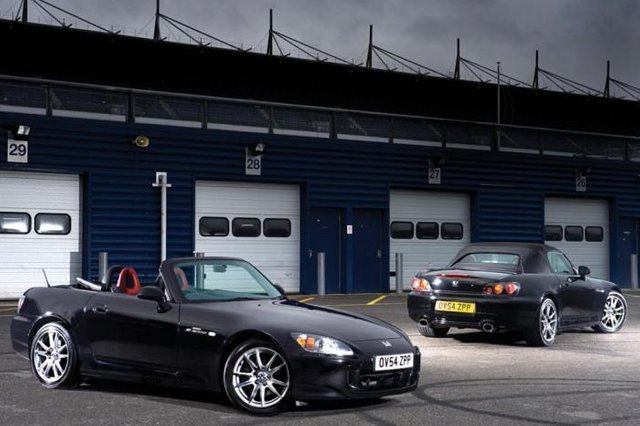HONDA 2000: Instant classic. Why buy it?
240 hp - well over 110 hp / liter despite the lack of supercharging - but just 207 Nm of torque - as is normal for a motor of this type - that reach 9,200 rpm. Do not expect the "back" of a modern turbo to the middle, but after 5850 revs the VTEC comes into play and does so with a fluidity and a memorable soundtrack. Reaching 9000 rpm is unbelievable. The Honda S2000 is a separate car, a true instant classic that lasts to die that does not seem to notice the passing of time. A car that belongs to another era, now complete, which probably will not come back. And heck it how beautiful it is.
Honda has recalibrated the suspension three times during the life of the S2000 (ten years, from 1999 to 2009); the first ones were criticized because they did not communicate how they should have been, also due to the steering that did not warn of the arrival of a sudden oversteer at the limit. Not beautiful. In the early 2000s, harder springs and softer anti-roll bars, in addition to recalibrated dampers, made it easier to drive with the knife between the teeth. At the same time, the plastic rear window gave way to the glass one. The big change occurred in 2004, with springs even stiffer on the front, softer at the rear, as well as the anti-roll bars, slightly revised frame, decreased rearward convergence to compress the suspension and, always at the rear, a center of gravity lower. The torque increases - slightly - in the middle, the alloy wheels go from 16 "to 17" and the steering is a little 'less direct (7%). Needless to say, the behavior of the new S2000 changes a lot. Since 2006, among other things, stability control - standard since 2008 has also arrived.
Honda engines are notoriously well designed, made to last. Oil and filters are made every 15,000 km (but you do it first) or once a year. Around 120,000 km it is better to control the distribution chain, which can slam species during the start-up phase. The clutch should last at least 100,000 km, while the differential and crankshaft are robust, although some elements of the latter may yield earlier than expected.
Pay attention to the rust, which can affect the suspension and the underbody, due to insufficient factory protection. The interior plastics are cheap and easily vibrate, as well as prematurely wear out in some areas. It is a spider with a canvas roof, so pay attention to gears and various arms of the roof and to the state of the fabric. A tidy roof is a sign of care by the owner. Attention also to the premature wear of the brake calipers and steering column supports, but above all attention to the consumption of oil, which is very high, about 1 liter every 1000-1500 km. The VTEC system is very valid and usually does not give up. Every year it is better to check the geometry of the suspensions.
The European S2000 market is a world apart. The figures seem to be rather stable for some time: we start from about 8000 Euros for the most experienced specimens, but we also climb up to nearly 30,000 Euros for the more recent ones (or for those who try it ...). We do not do the traders, but we are of the idea that 20,000 euros for an S2000 last series, in order and with a low mileage may be an honest request.






Congratulations @masterluke! You have completed some achievement on Steemit and have been rewarded with new badge(s) :
Click on any badge to view your own Board of Honor on SteemitBoard.
To support your work, I also upvoted your post!
For more information about SteemitBoard, click here
If you no longer want to receive notifications, reply to this comment with the word
STOP